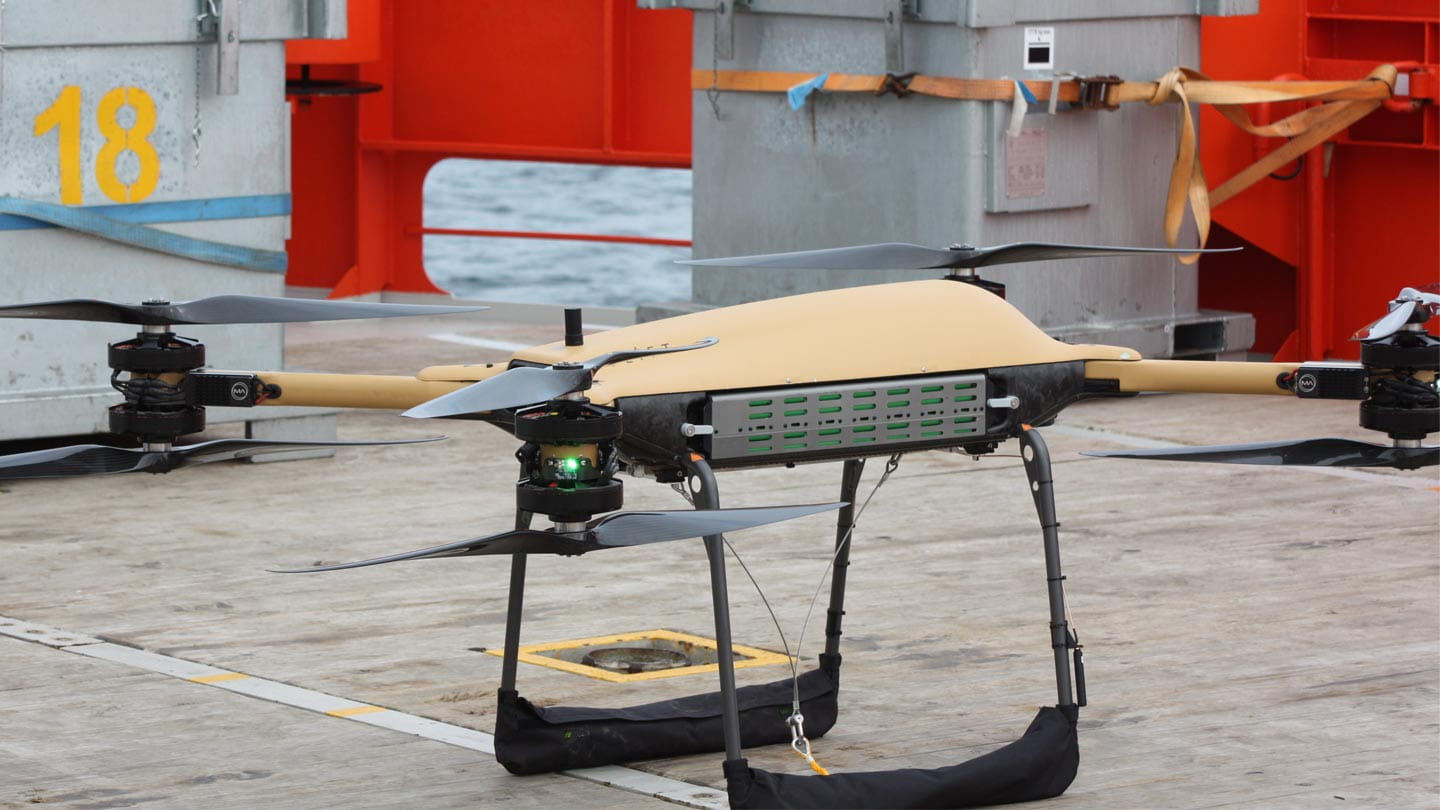How Ørsted uses drones in offshore wind to save time and money
30.10.23
Mikkel Haugaard Windolf, Product Line Manger, Offshore Logistics, Ørsted
30.10.23
Mikkel Haugaard Windolf, Product Line Manger, Offshore Logistics, Ørsted

The heavy-lift cargo drones will be used to carry out multiple cargo deliveries to wind turbines, transporting spare parts and tools to and from the crew transfer vessels (CTVs) and service operation vessels (SOVs), which are already on site. Transporting a spare part from a boat to the top of the nacelle usually takes at least 30 minutes. Using drones, we can get the spare parts required directly to the nacelle much faster, reducing the need to sail to and from the wind turbine generators (WTGs) and avoiding crane operation.
This isn’t the first time we’ve trialled drones at Ørsted. Last year, we partnered with DSV, the global Danish transport and logistics company, to test long-distance drone transport of spare parts and tools at Anholt Offshore Wind Farm.
Today, Ørsted is ranked as one of the world’s most sustainable energy companies, and we’re targeting net-zero emissions by 2040. As part of our vision to create a world that runs entirely on green energy, we’re constantly exploring new ways to increase renewable power production and reduce carbon emissions from service logistics. And we believe drones have a powerful role to play.
As the name suggests, offshore wind farms are usually located far from shore, requiring service technicians and necessary spare parts to be transported by ship. Technicians bring their tools and the components most often needed for the wind turbines, but if special spare parts are required, they must go back onshore to get them. On top of this, most spare parts need to be transported from the vessel via cranes to the nacelle. This can be a costly and time-consuming exercise, and the repairs are therefore often delayed until the next day.
I’ve summarised the top three benefits of using drones as an alternative method of logistics support in offshore wind below: